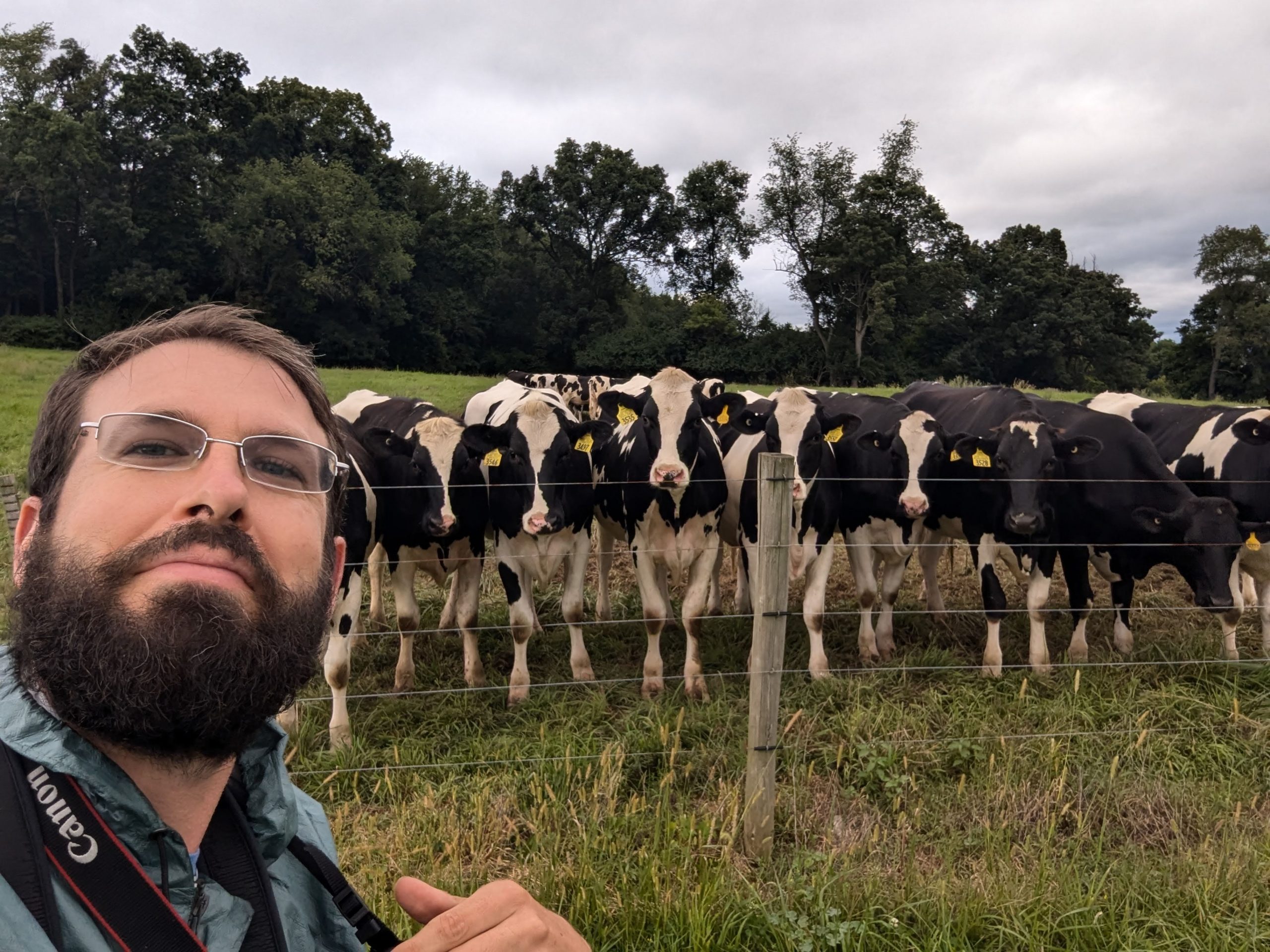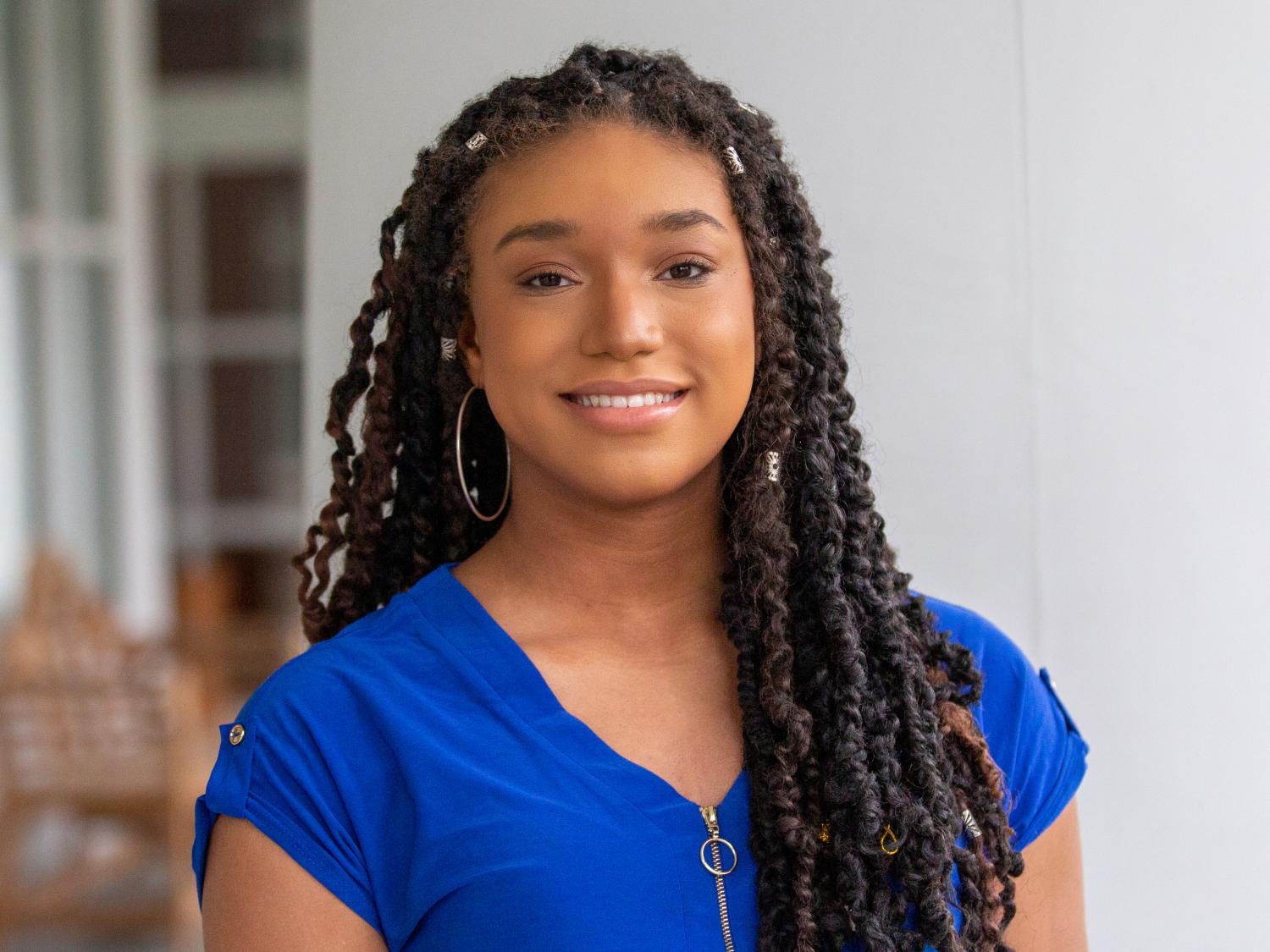Joe Gyekis, Bird Safe Penn State Advisor and Associate Teaching Professor of Biobehavioral Health
In our recent interview with Joseph Gyekis, Bird Safe Penn State Advisor and Associate Teaching Professor of Biobehavioral Health, we discussed the life-long bird admirer’s journey as an advocate for bird-safe practices on Penn State’s University Park campus.
This year, on October 12, World Migratory Bird Day (WMBD) is celebrated globally. While “every day is Bird Day,” WMBD is when we seek to increase awareness about the threats migrating birds face during peak migration periods.
At Penn State, as in many other populated areas, birds may fall victim to window collisions amid their migration journeys. Light pollution can also be disruptive both to night flyers and insects – the main food source of our avian friends. Gyekis reminds us that we have an opportunity to mitigate these impacts on biodiversity through the implementation of preventative practices. These eye-catching birds that soar across campus are in jeopardy, but Gyekis outlines how we can help keep them safe.
As a Bird Safe Penn State advisor, Gyekis empowered students to help document bird-window collisions across Penn State’s University Park campus. Students, staff, and visitors can report a collision observation to Bird Safe Penn State. Gyekis works with undergraduate students and staff to create educational opportunities that teach the public about these sustainable practices and the importance of preserving the safety of wildlife on campus.
This interview has been edited for length and clarity.
When did your interest in sustainability begin?
My parents have been active environmentalists since before I was born, so I was lucky enough to be brought up with this family culture.
How does your position at Penn State as an Associate Teaching Professor of Biobehavioral Health connect with sustainability?
I believe that just being a person on this earth inherently connects you to sustainability. Like everyone else, I must eat, and I need shelter. I’m a parent and care that future generations will have a livable world. As a health science teacher, I have read about how pollution directly poisons us, how infrastructure choices make it easy to be sedentary at every turn, and how many professionals are needed in various fields to provide the general population with clean water and healthcare and respond effectively to disasters. I want to encourage students to be the kind of thoughtful, caring, and well-organized people who will do the work that it takes to make the next generation healthier than the last.
You advise a group called ‘Bird Safe Penn State, ’ which advocates for bird-safe architecture. For those unfamiliar, could you describe the group’s purpose and mission?
Scientists estimate that more than a billion birds are killed yearly by colliding with windows across North America, including here on our campus. Experimental evidence shows that most of this mortality can be prevented by placing patterns on the exterior surface of glass. The purpose of our group is to help collect evidence showing which buildings on campus are particularly dangerous for birds, to help advocate for retrofits on high-priority buildings, and to encourage bird-safe building practices in general.
What influenced you to start advocating for bird-safe architecture?
Finding the remains of deceased birds on campus is what inspires my advocacy. In 2017-2019, I noticed a few myself, and I also knew that a friend of mine was studying the topic, which raised my awareness a bit. I saw a few students posting about this issue on Facebook birding groups, and I thought I should start keeping a database. Then, a very devoted student, Chyvonne Rhoads, started a project with Julian Avery, Assistant Research Professor of Wildlife Ecology and Conservation, to study bird strikes on campus more systematically, which helped to launch the group into action.
How do you approach educating students and the public about the value of bird-safe architecture?
I think the best approach to educating students who are already interested is to walk with them on campus and show them birds that have hit windows. I try to get positive press for the general public whenever a bird-safe retrofit is installed. It’s an easy topic to be very ‘doom and gloom’ about, and since I have many birds bleeding from the mouth and dying of seizures in my hand, sometimes I want to run up to bystanders and say, “See the bird? It’s dying, and nobody cares!” But I restrain myself and try to be patient. I do educational work, network with relevant stakeholders, and move things forward step-by-step. Since retrofitting buildings and changing building standards is difficult for a large institution, this work will take a while.
I liken the topic to the 1950s when people discovered that tobacco smoking causes lung cancer. The number of people smoking tobacco continued to increase for decades, but the rate of increase slowed as the educational message spread, and eventually, smoking began to decrease. It might take just as many decades to reduce bird-window collisions.
How do you believe ‘Bird Safe Penn State’ aligns more broadly with the Sustainable Development Goals (SDGs)? In particular with Goal 15, which emphasizes protecting ‘Life on Land’ and with the Goal 11, ‘Sustainable Cities and Communities’?
If we want to halt biodiversity loss on land, even as human land use continues to grow alongside population and wealth growth, we need to find a way to coexist with wildlife instead of dominating it and, bluntly – killing biodiversity in the areas where we live. I’m 100% supportive of the idea that intelligent wildlife management in human backyards and workplaces is nature’s greatest hope. The homegrown national park idea tells us we can go from having pretty yards to having ecological havens where box turtles, luna moths, and migratory birds can thrive. Our campus at Penn State can eventually be the same. Penn State’s beautiful vegetation is already a magnet for migratory birds. Still, they are killed at painfully high rates by the many glassy buildings between the beautiful tall oak trees across campus. I think most people are looking forward to a day where we can not only drink clean water and breathe clean air, but also see wildlife around us thriving too.
What can Penn State students and the university as a whole do to protect local birds? What progress has been made to implement bird-safe architecture at Penn State?
At a personal level, the most important things that regular people can do to reduce direct threats to birds are keeping cats in enclosed “catios,” installing hanging strands or sticker patterns on their exterior windows, reducing unneeded lighting at night with motion sensors and reflectors to direct light down to the ground instead of up to the sky, and driving carefully.
To reduce indirect threats, eating sustainably sourced meats or vegetarian foods can dramatically reduce the impact of agriculture on habitat loss and pollution. At the community level, students can help us to advocate for bird safe building practices on new buildings, help us find and document dead and injured birds, and help us fundraise for bird safe glass retrofits, such as through our Giving Tuesday Biodiversity Initiative.
How do you personally define success in your role advocating for bird-safe architecture, and what keeps you motivated to continue your advocacy work?
It’s both about the journey and the destination. Along the journey, I feel successful when someone I talk to learns something new and shows that they care. I’ve made genuine friends through this project and helped a few people learn things they would not have known otherwise. As for the destination, if we can get a bird-safe retrofit on the south face of the bridge over Shortlidge at Huck Building, that would be a meaningful accomplishment. I’ve seen too many dead birds there, including eight just yesterday.
Can you share a personal story that reaffirmed your commitment to advocating for bird-safe architecture on Penn State’s campus?
Last Friday morning before dawn, I heard a lot of birds migrating. As a birdwatcher, I was excited by the idea of many rare birds soaring through the air. Still, my joy at this awesome spectacle of migration was tempered by my fear about the likelihood of window collisions to come. I got on my bicycle and rode to campus. Upon my arrival, I found birds actively hitting the buildings; many attracted to the lighted areas around big parking lots.
There was a congregation of live migratory birds in one area beside Beaver Stadium, so I messaged the Bird Club to let them know. I got some “Thank Yous” from birders for alerting them about such a great spot to see so many beautiful birds. The next day, very near to that parking lot, Jack Griffin, a student working with me, found several warblers killed at windows at the stadium and the nearby Pegula Ice Arena. These and more than 25 other dead birds were found over the next few days. It makes me feel like we must keep chipping away at this problem and advocate for necessary changes.
What advice would you give to someone interested in becoming an advocate of protecting our climate and its inhabitants?
Make friends with people who share your passion. Talk about the highs and lows of the journey with those people. Expect no results in the short term, but keep working towards your goals in the long term. There’s an old Margaret Mead quote that is worth repeating: “Never doubt that a small group of thoughtful, committed individuals can change the world. In fact, it’s the only thing that ever has.”





